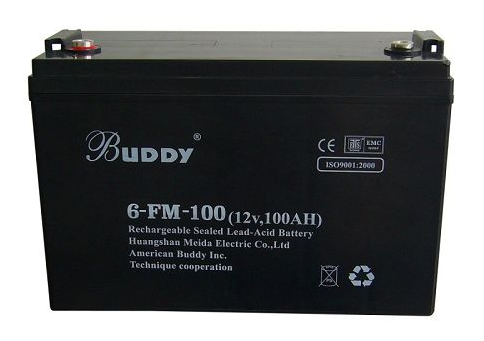Power battery for dual source trolleybus is a kind of high-performance battery specially designed for dual source trolleybus, which plays a vital role in the operation of dual source trolleybus. In the following, I will be from the definition, characteristics, types, performance requirements and practical applications of dual-source trolleybus power battery for detailed description.
Definition
Dual-source trolleybus power battery, as the name suggests, refers to the dual-source trolleybus to provide power for the battery. Dual-source trolleybus is a combination of traditional trolleybus and electric vehicle features of transportation, it can be obtained through the overhead power grid, but also through the vehicle battery power supply. Therefore, the power storage battery for dual-source trolleybus plays a key role in energy supply in the operation of dual-source trolleybus.
Characteristics
High energy density: In order to meet the demand of long-distance and high-speed operation of dual-source trolley buses, the power storage battery for dual-source trolley buses has high energy density. This means that in the same volume and weight, this battery can store more energy, thus providing a longer range for dual-source trolley buses.
High power output: Dual-source trolleybuses require high power output under starting, accelerating and climbing conditions. Therefore, the power battery for dual-source trolley buses needs to have high power output capacity to meet the power demand under these working conditions.
Long service life: Since dual-source trolley buses require frequent charging and discharging, the power battery for dual-source trolley buses needs to have a long service life. By optimizing the structure and materials of the battery and improving the number of cycles and stability of the battery, the service life of the battery can be extended.
High safety: dual-source trolley power battery needs to strictly comply with safety standards in the design and manufacturing process, to ensure that no fire, explosion and other safety accidents will not occur in the use of the process. At the same time, the battery management system also needs to have perfect safety protection functions, such as overcharge, overdischarge, overheating and other protection functions.

Type
Dual-source trolleybus power battery types are diverse, commonly including lithium-ion batteries, nickel metal hydride batteries, lead-acid batteries and so on. Among them, lithium-ion batteries are widely used in dual-source trolley buses due to their advantages of high energy density, high power output and long life. According to different cathode materials, lithium-ion battery can be divided into lithium manganate battery, lithium iron phosphate battery, ternary lithium battery and so on.
Product Characteristics
Battery size (L*W*H)(mm) | 332*173*223 | ||
rated voltage | 12V | ||
Rated capacity | 100Ah | ||
quantitative (science) 25℃(77°F) | 8hourly rate( A) | 90Ah | |
5hourly rate( A) | 83Ah | ||
4hourly rate( A) | 78Ah | ||
3hourly rate( A) | 73Ah | ||
2hourly rate( A) | 63Ah | ||
1hourly rate( A) | 58Ah | ||
| internal resistance | adequately charged 25℃(77°F) | ≤5mΩ | |
Cycle life | 80%(C10) Depth of discharge | 600substandard | |
| Float Life | 25℃(77°F)Float Charge Voltage 13.8V | Greater than 3 years | |
Effect of temperature on capacity (10 hourly rate ) | 40℃ (104°F) | 102% | |
25℃ (77°F) | 100% | ||
0℃ (32°F) | 85% | ||
-15℃ (5°F) | 65% | ||
self-discharge 25℃(77°F) | Remaining capacity after 3 months of storage | 90% | |
Remaining capacity after 6 months of storage | 80% | ||
Remaining capacity after 12 months of storage | 62% | ||
Charging method 25℃(77°F) | circulate | Initial current not greater than45A constant pressure 14.4-14.8V | |
equalize | constant pressure 13.5-13.8V | ||
Performance requirements
The performance requirements of power battery for dual-source trolley mainly include the following aspects:
1. Energy density: in order to meet the long-distance operation requirements of dual-source trolley buses, the power battery needs to have a high energy density.
2.Power density: In order to meet the power requirements of dual-source trolley buses in starting, accelerating and climbing conditions, the power battery needs to have a high power density.
3.Cycle life: the power battery needs to have a long cycle life to meet the long-term use of dual-source trolley buses.
4.Safety: the power storage battery needs to have a high level of safety, to avoid fire, explosion and other safety accidents in the process of use.
Practical application
In practical application, dual-source trolleybus power battery needs to be used with the battery management system. Battery management system can monitor each battery in real time, master the working status of the battery, and ensure the safe and stable operation of the battery pack by measuring the float voltage and loaded voltage of each power battery, checking the consistency of the battery pack voltage. In addition, the battery management system can also replace the early failure of the battery in a timely manner to avoid overcharging and over-discharging of the battery phenomenon, thereby extending the service life of the vehicle battery and improving the safety and reliability of the vehicle.In conclusion, the power battery for dual source trolleybus is an indispensable energy supply equipment in dual source trolleybus. By continuously improving the performance indexes of energy density, power density and safety, and optimizing the function and application effect of the battery management system, the development and application of dual-source trolley buses can be further promoted.